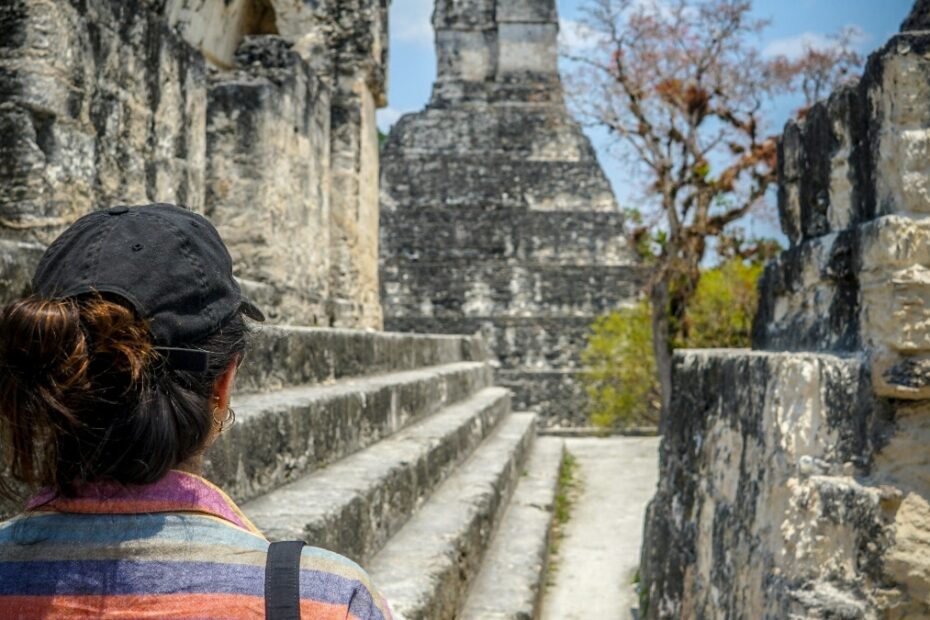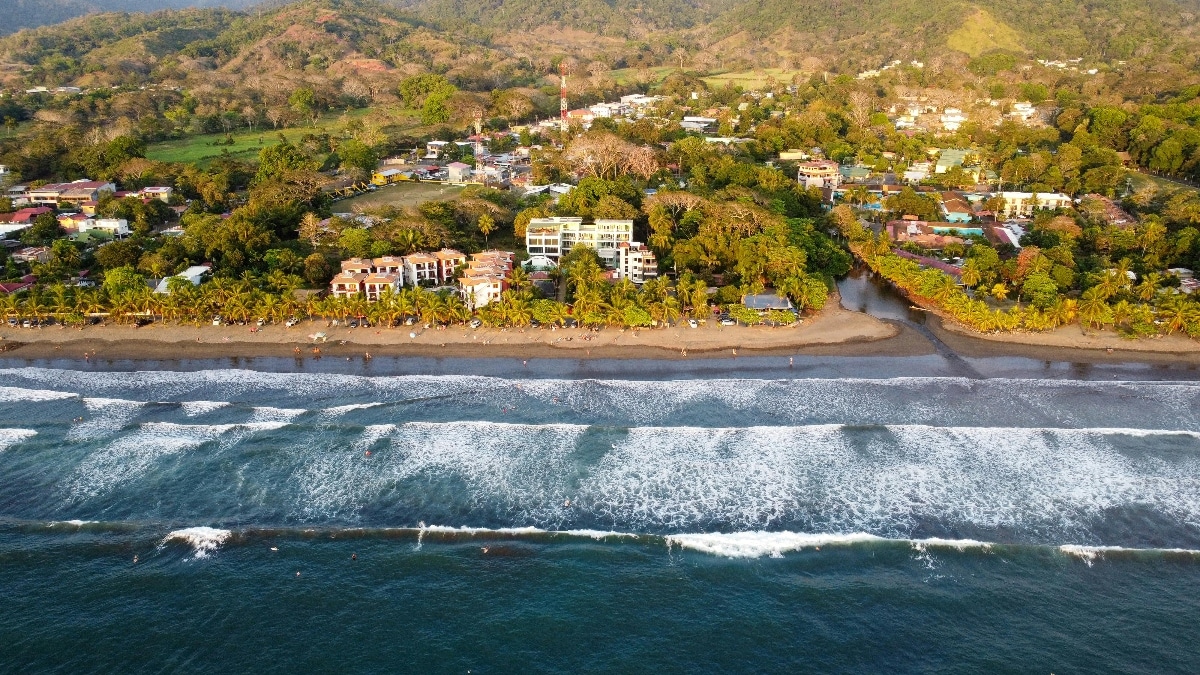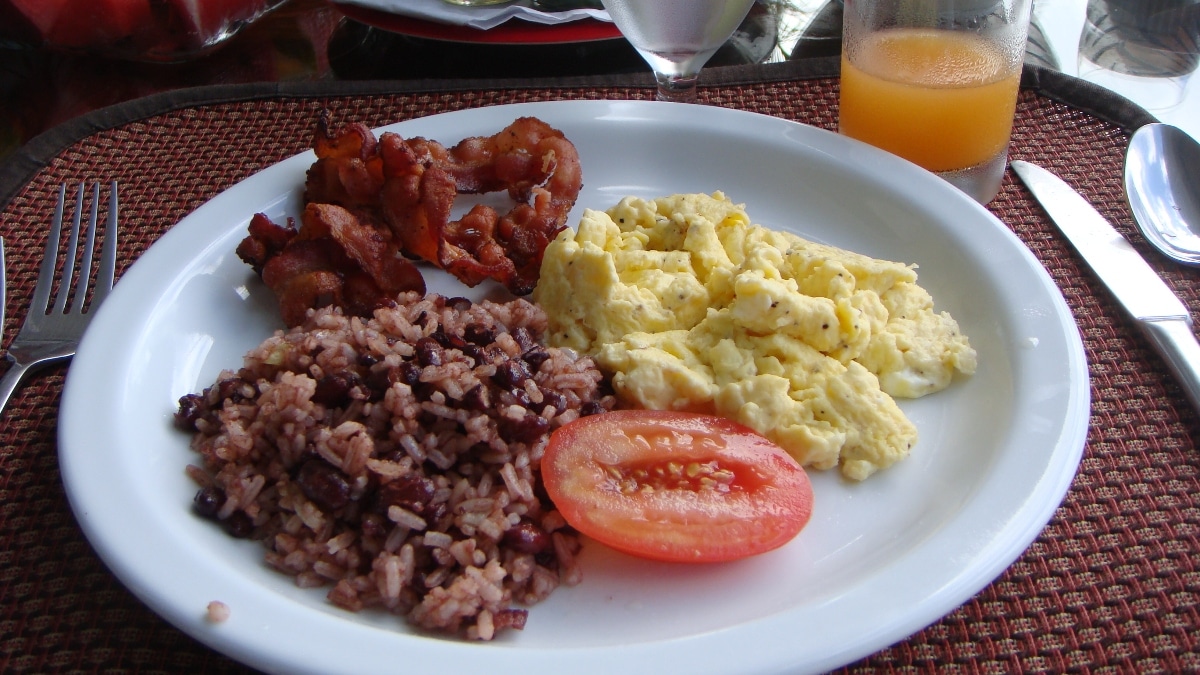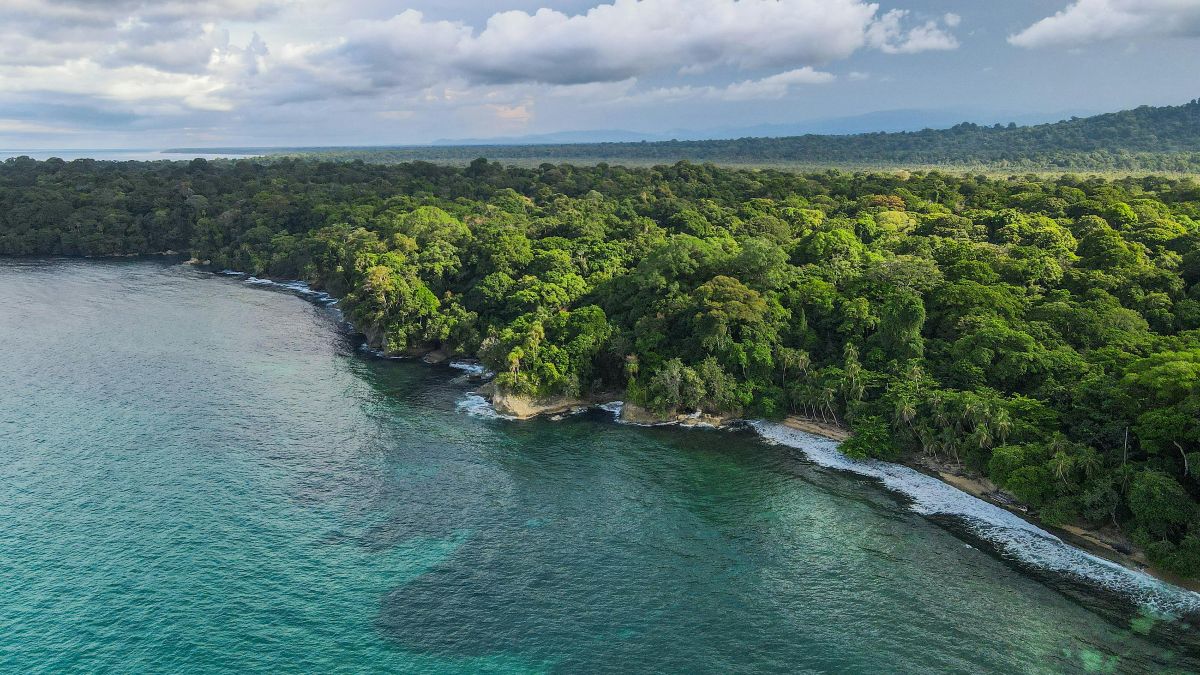This guide offers ten tips to cover the practical side of solo female travel in Central America — how to stay safe, move confidently, and make smart choices based on what women living and traveling here actually experience.
Central America attracts countless women traveling on their own each year. Some come for a short adventure, others to spend months living and working remotely. The region rewards independence but demands awareness. Traveling solo as a woman means understanding both the logistics of moving around and the cultural realities of being noticed in public spaces. The following sections outline practical measures that women across the region consistently describe as the difference between a stressful trip and a smooth one.
1. Unwanted Attention
Unwanted attention is one of the most common issues for women in Central America, particularly in cities and busy beach towns. Street remarks, unsolicited conversation, or the occasional catcall are common but rarely escalate. They’re part of a cultural habit rather than outright aggression, although they can be irritating and tiring. The most effective way to handle them is to avoid engagement. Ignore, walk away, or at most give a polite “no, gracias.” Arguing or showing irritation often prolongs the exchange.
In smaller towns, the atmosphere tends to be friendlier and more respectful, but it is still noticeable when a woman is alone. Locals are often curious rather than hostile. Making eye contact or smiling is interpreted differently here than in North America or Europe. Keeping interactions neutral is best. Many solo travelers find that mentioning a husband or boyfriend—real or not—quickly discourages unwanted approaches. Over time, you’ll learn which situations are harmless and which call for distance. Awareness and experience sharpen that instinct.
2. Accommodation Choice
Where you stay has more impact on safety than any other decision you’ll make. Solo women are generally better off in small, managed accommodations where staff or hosts are present. Boutique guesthouses, eco-lodges, or rentals with on-site hosts tend to offer both oversight and privacy. Avoid isolated apartments, even if they look great online, and be wary of rentals with no recent reviews. A property that’s too cheap or too empty usually signals problems.
Look for good lighting, visible neighbors, and secure doors and windows. If arriving after dark, arrange transportation in advance and confirm that reception will be open. Solo travelers often prefer places run by women or families because management tends to be attentive and aware of their guests’ movements.
When staying longer term, spend time exploring neighborhoods before signing a lease. What feels fine by day can feel desolate at night. Walk the area at different times, check lighting, and notice how many locals are out after sunset. Many expats recommend paying a bit extra for peace of mind. The cost difference is minor compared to the comfort of feeling secure where you sleep.
3. Getting Around
Transport in Central America is improving, but it’s still uneven. For solo women, choosing the right method depends on time, distance, and familiarity with local routes. Daytime buses are generally safe and inexpensive. Sit near other women or families, keep your bag on your lap, and stay alert at stops.
Ride-hailing apps like Uber or DiDi are better for short trips, while regular taxis are best avoided. In rural areas where apps don’t operate, hotels can recommend trusted drivers. Many long-term residents keep the numbers of two or three regular drivers on hand.
Renting a car can also be worthwhile. It offers independence and avoids waiting on public transport in unfamiliar areas. Roads can be rough, and signage inconsistent, so learn local habits before driving long distances. Regardless of how you travel, plan your route before leaving and avoid wandering after dark. Being prepared looks confident, and confidence discourages attention.
4. “Helpful” Strangers
Most people in Central America are warm and generous, and many genuinely want to help visitors. But every solo traveler eventually meets someone whose friendliness feels too insistent. Offers to carry bags, show directions, or act as a guide can blur into unwanted attention. The safest response is polite refusal. A clear “thank you, I’m fine” delivered with a smile but no hesitation usually ends the conversation.
If you accept help, say, someone giving directions, keep the interaction brief and public. Avoid allowing strangers to lead you away from populated areas or take your belongings “to help.” Over time, you’ll learn to read intentions. The majority of locals are sincere, but as everywhere, a few see opportunity in distraction.
The same caution applies to other travelers. Shared hostels and group tours are social, but not everyone’s motives align. Women report occasional pressure to join outings or share taxis when they’d rather not. Declining politely but firmly is enough. Solo travel means making decisions that prioritize comfort over social obligation. Most people respect that once they see you’re confident in your choices.
5. Reading Social Context
Understanding social dynamics in Central America is an important part of staying safe. Locals are typically friendly, curious, and quick to start conversations, but interactions can sometimes feel more direct or familiar than visitors are used to. The key is learning where friendliness ends and persistence begins.
Men occasionally approach women to chat or offer help. Most mean no harm, but solo travelers learn quickly that polite boundaries work better than confrontation. A calm “no, gracias” or brief smile before walking away signals that the conversation is over. Firmness without hostility earns respect and ends most situations cleanly.
6. Alcohol and Nightlife
Nightlife in Central America varies widely depending on the setting. Off the tourist trail, it’s pretty uncommon to see women out drinking alone. Local bars and cantinas are often male-dominated spaces, and a woman sitting by herself may attract curiosity or be mistaken for looking for company. This doesn’t mean you can’t go out; it simply means knowing how these settings work.
In tourist areas, beach communities, and major cities with an international scene, women can move around more freely without standing out. Places that cater to travelers, restaurants with bars, live-music venues, or lounges attached to hotels tend to have a mixed, relaxed crowd. These are usually the safest and most comfortable environments for solo visitors.
If you want to go out at night, it helps to pair up with other travelers. Most women find that having company deters unwanted attention and makes for a more enjoyable evening anyway. Let someone at your hotel or hostel know where you plan to go and when you expect to return.
In short, nightlife can be fun and sociable here, but context matters. Stick to venues used to foreigners, move with people you trust, and stay aware of your surroundings. That’s how most solo women enjoy Central America’s evenings without issue.
7. Health and Hygiene
Health awareness in Central America is as much about routine as emergency care. Mosquito-borne illnesses like dengue and malaria exist across the region. Repellent, long sleeves at dusk, and screened windows or nets are the basics. Bottled or filtered water is safest outside major cities, and sticking to busy food stalls helps prevent stomach issues.
Hygiene products can be expensive or hard to find in small towns. Bring enough tampons, menstrual cups, or preferred brands from home. Plumbing systems generally can’t handle flushed paper, so use bins. Keep small packs of wipes or biodegradable tissues for public bathrooms.
Private clinics in major towns offer good medical care for reasonable prices, and pharmacies are well stocked. For longer stays, international health insurance that includes regional coverage is worth the cost. Staying healthy while traveling alone reduces stress and keeps you focused on enjoying the trip.
8. Privacy and Online Safety
Online privacy is as important as physical awareness for women traveling alone. Avoid posting your real-time location or detailed plans on social media. Share updates once you’ve left a place, and keep accommodation names and personal information off public profiles.
Use official booking platforms for accommodation and avoid sharing phone numbers or WhatsApp details until necessary. If you’re using dating or networking apps, meet in public spaces and tell someone where you’re going. Moving conversations off-platform too quickly is often a sign to be cautious.
Public wifi is convenient but rarely secure. Always connect through a VPN (virtual private network) when checking email, banking, or making reservations. A VPN encrypts your data and hides your location, preventing snooping or tracking on shared networks — especially in hostels, cafés, or airports. And don’t be concerned with how much a VPN costs. Most reputable ones are inexpensive and easy to install on phones and laptops.
Good digital habits protect you as effectively as locking your door at night. Treat your online presence the same way you treat your valuables: private, limited, and only visible to the people you choose.
9. Community and Networks
No one understands women’s travel safety like other women. Local Facebook groups are excellent for local recommendations, reliable contacts, and neighborhood updates. They’re also useful for finding likeminded friends and travel companions for day trips or shared transport.
In person, joining classes or local events (yoga, cooking, language, volunteer work, etc.) is an easy way to meet people naturally. Long-term expats often maintain private WhatsApp lists of vetted drivers, doctors, and landlords. These networks operate quietly but efficiently, saving newcomers time and uncertainty.
10. Trusting Instincts
Intuition is the one constant every experienced solo female traveler mentions. If a place, person, or situation feels wrong, step away immediately. Changing taxis, leaving a bar, or moving accommodation mid-trip is normal. You don’t need a reason beyond your comfort.
Second-guessing instincts out of politeness is a mistake many make once. Afterward, they listen sooner. The more time you spend in Central America, the better you’ll get at reading situations.
Solo travel teaches quick decision-making and calm reactions. Most women who travel here long term say that learning to trust themselves has been the most valuable part of the experience.
Closing Thoughts
Traveling alone as a woman in Central America isn’t about fear or risk. It’s about knowing the landscape, understanding the culture, and making practical decisions every day. The region can be unpredictable, but it’s also generous and open-hearted. The women who enjoy it most are those who respect local realities while maintaining their independence.
Choose safe accommodation, stay connected to others, protect your privacy, and move with awareness. These are the habits that allow women across the region to travel freely and live independently. With preparation and perspective, Central America is not only safe — it’s one of the most rewarding regions in the world to explore solo.



